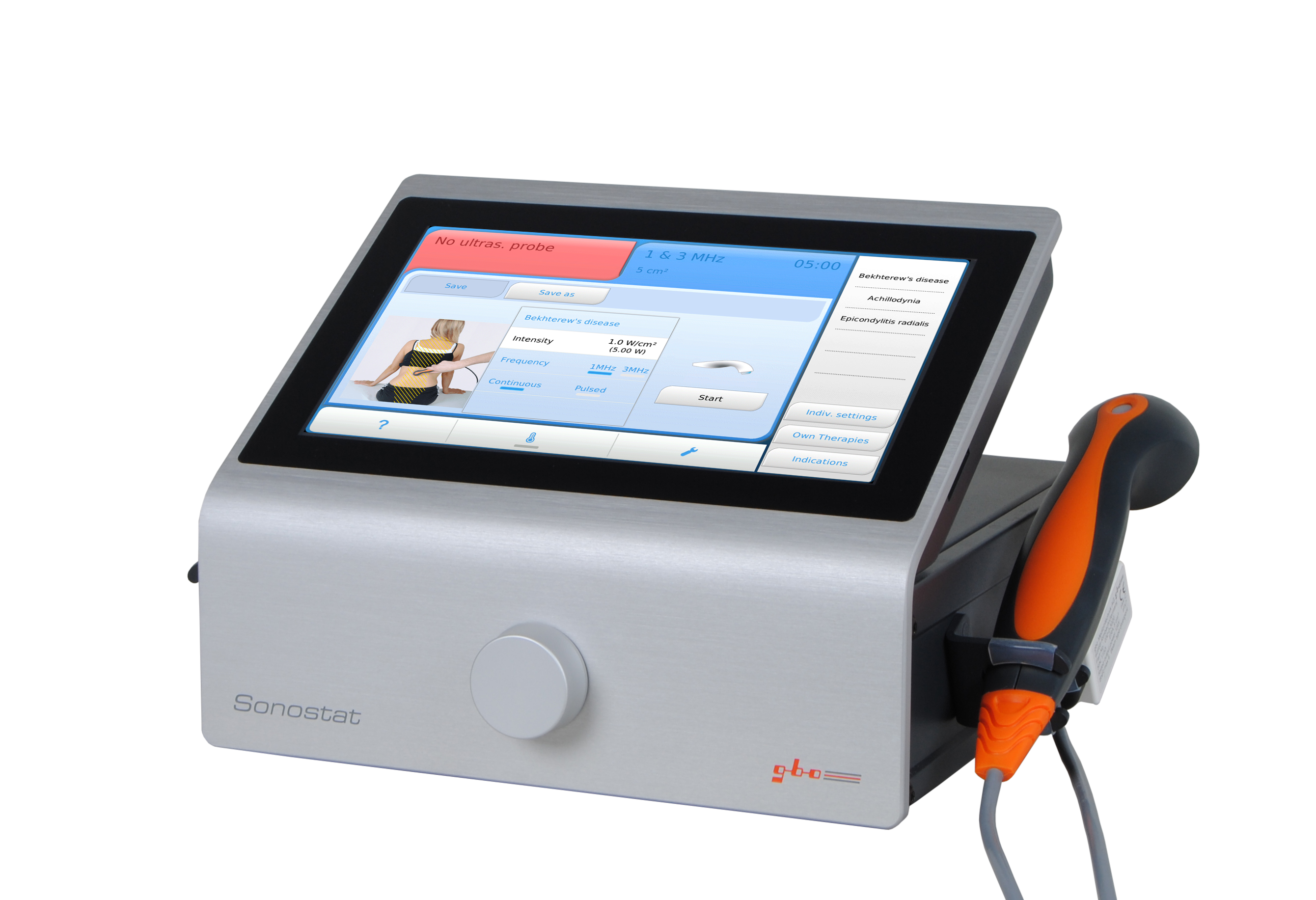Ultrasound therapy
The ultrasound therapy device generates the ultrasound waves with the help of the two main components, the generator and the treatment head. Due to its mechanical, thermal, chemical and biological effect, ultrasound can be used successfully for: inflammatory, rheumatic diseases of the musculoskeletal system traumatic affections such as contusions, sprains, contractures inflammatory diseases of the peripheral nerves such as neuritis or neuralgia and peripheral circulatory diseases.
Introduction
There are three effects of ultrasound:
Mechanical effects (primary effect)
Through the ultrasound, the mass particles in the irradiated tissue experience a vibration and an acceleration (= high-frequency vibration massage)
Thermal effects (primary effect).
In the environment of the irradiated tissue, the respective temperature increases locally. The energy course and temperature in the treated tissue is determined by the absorption and reflection of the ultrasound and is thus strongly tissue-specific.
Piezoelectric effect (primary effect)
Under alternating mechanical pressure, electrical potentials are induced, especially in bones, which lead to an increase in cell activity.
Additionally: Biological effects (secondary effect)
Due to thermal and mechanical effects, biological effects such as better membrane permeability, vasodilatation with resulting pain relief are achieved.
The duration of a treatment depends on the one hand on the size of the body surface to be sonicated and the size of the treatment head, but also on the stage of the disease. Usually, a treatment time of 5 minutes is sufficient for the sonication of a field of medium size. Only in the case of diseases that are accompanied by changes in the tissue structure, e.g. scleroderma, arthrosis, does it often prove advantageous to extend the sonication time to approx. 10 minutes per field. Long treatment zones, such as nerve courses (sciatica), are expediently divided into several fields, which are sonicated consecutively for 5 or 10 minutes each.
The general rule for the choice of intensity is: the more acute the process, the lower the intensity to be applied, the more chronic the process, the higher the intensity to be applied. At the beginning of the treatment, a certain caution in the dosage is recommended, which is also advisable especially when sonication is applied to the trunk of the body with regard to nearby sensitive organs. The upper limit of the permissible intensity will generally be given by the appearance of the periosteal pain, provided that there is no sensitivity disorder in the patient. Treatment with the intensity that produces a just perceptible feeling of warmth in normally sensitive patients can be considered therapeutically appropriate. Underdosing carries the risk of ineffectiveness and thus unsuccessful efforts.
The number of necessary sonications, which are carried out daily or every other day depending on the circumstances, depends on the respective treatment success; usually one or two further treatments should follow after the complaints have subsided. In general, 10 to 15 treatments are sufficient. If the improvement is slow, the therapy should be continued until a satisfactory result is achieved. Even if there is an apparent deterioration, it is recommended not to stop the treatment before the third or fourth session. In case of persistent deterioration, it is advisable to check the diagnosis (e.g.: herniated disc in sciatica, foci). Structurally changing processes often prove to be favourably influenceable after all when the treatment is extended to up to 40 sessions.



